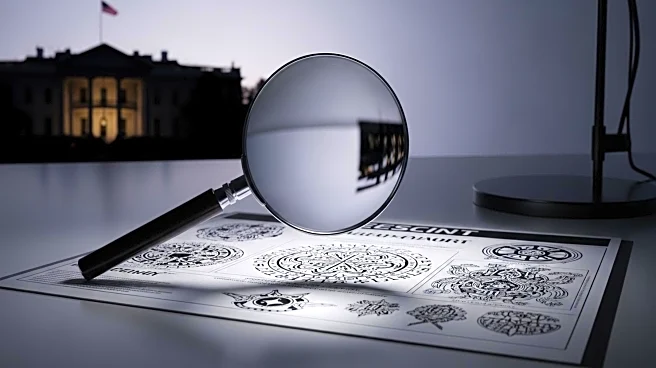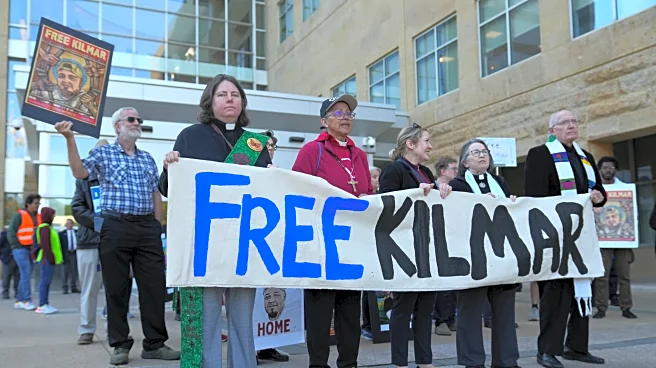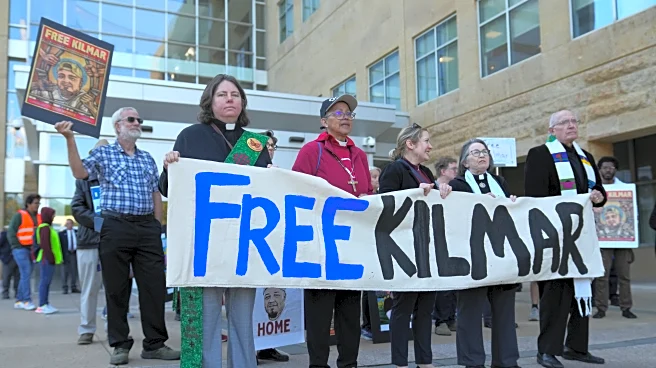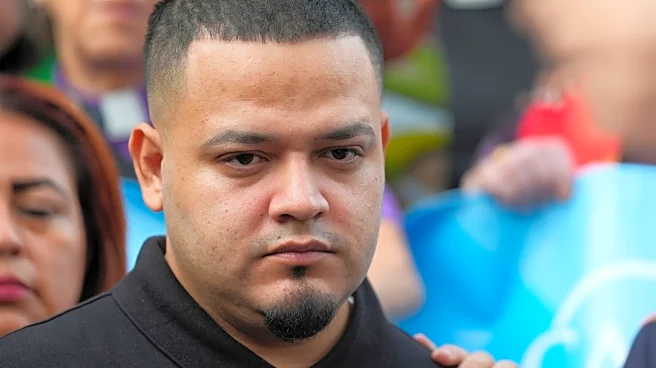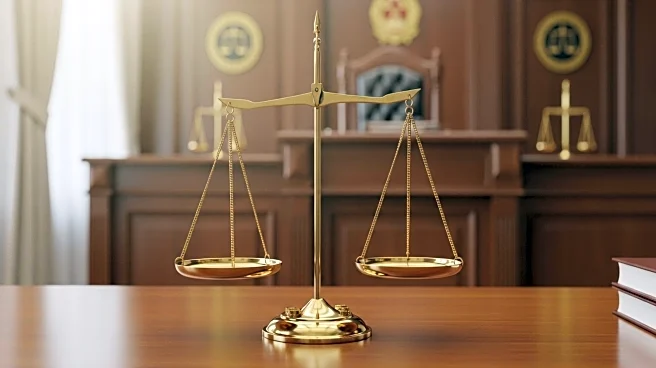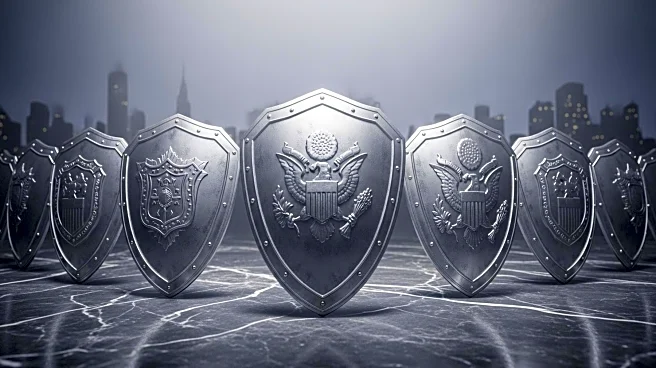What's Happening?
The Trump administration has asserted that Kilmar Abrego Garcia's finger tattoos are evidence of his membership in the MS-13 gang, a claim that has been challenged by gang experts. The tattoos, which include symbols like a cross, skull, smiley face, and marijuana leaf, have been presented by the White House as proof of gang affiliation. However, experts such as Jorja Leap from UCLA and Thomas Ward from USC argue that these symbols are not definitive indicators of MS-13 membership. The controversy arose after President Trump displayed a digitally altered image of Garcia's tattoos, suggesting gang ties. Despite the administration's stance, Garcia's family and attorneys deny any gang association, and experts emphasize the need for a fair trial to assess the claims.
Why It's Important?
This situation highlights the complexities of immigration enforcement and the potential for misinterpretation of cultural symbols. The administration's focus on tattoos as evidence of gang affiliation raises concerns about due process and the accuracy of such claims. If Garcia is wrongly associated with MS-13, it could lead to unjust deportation and impact his legal rights. The broader implications include the potential for racial profiling and the stigmatization of individuals based on appearance rather than verified criminal activity. This case underscores the importance of expert testimony and legal scrutiny in immigration cases, affecting public policy and societal perceptions of immigrant communities.
What's Next?
The legal team representing Garcia is advocating for his return to the U.S. to face a fair trial, as the evidence presented by the administration has not been introduced in court. The White House's position remains firm, but experts continue to challenge the validity of the claims. The outcome of this case could influence future immigration policies and the handling of similar cases. Stakeholders, including immigration advocates and legal experts, are likely to push for more rigorous standards in evaluating gang affiliation claims to prevent wrongful deportations.
Beyond the Headlines
The ethical implications of using tattoos as evidence of criminal activity are significant. This case raises questions about cultural understanding and the potential for bias in law enforcement practices. The portrayal of Garcia's tattoos by the administration could contribute to negative stereotypes about immigrants and gang violence, affecting public opinion and policy decisions. Long-term, this case may prompt discussions on the role of visual symbols in legal contexts and the need for culturally informed interpretations.
